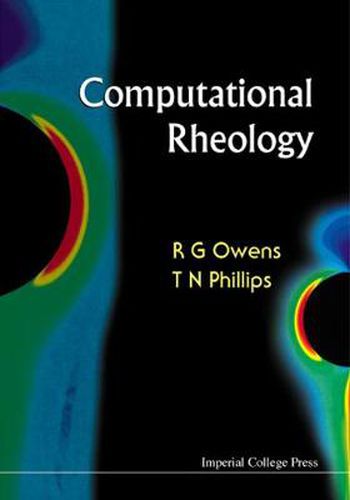Readings Newsletter
Become a Readings Member to make your shopping experience even easier.
Sign in or sign up for free!
You’re not far away from qualifying for FREE standard shipping within Australia
You’ve qualified for FREE standard shipping within Australia
The cart is loading…






Modern day high-performance computers are making available solutions to rheological flow problems of ever-increasing complexity. Computational rheology is a fast-moving subject - problems which used to be intractable, such as 3D transient flows of polymeric liquids, non-isothermal non-Newtonian flows or flows of highly elastic liquids through complex geometries, are now being tackled owing to the availability of parallel computers, adaptive methods and advances in constitutive modelling. This work traces the development of numerical methods for non-Newtonian flows from the late 1960’s to 2001. It begins with broad coverage of non-Newtonian fluids, including their mathematical modelling and analysis, before specific computational techniques are discussed. The application of these techniques to some important rheological flow problems of academic and industrial interest is then treated in a detailed exposition. Finally, the reader is kept abreast of topics at the cutting edge of research in computational applied mathematics, such as adaptivity and stochastic partial differential equations. All the topics in this book are dealt with from an elementary level.
$9.00 standard shipping within Australia
FREE standard shipping within Australia for orders over $100.00
Express & International shipping calculated at checkout
Modern day high-performance computers are making available solutions to rheological flow problems of ever-increasing complexity. Computational rheology is a fast-moving subject - problems which used to be intractable, such as 3D transient flows of polymeric liquids, non-isothermal non-Newtonian flows or flows of highly elastic liquids through complex geometries, are now being tackled owing to the availability of parallel computers, adaptive methods and advances in constitutive modelling. This work traces the development of numerical methods for non-Newtonian flows from the late 1960’s to 2001. It begins with broad coverage of non-Newtonian fluids, including their mathematical modelling and analysis, before specific computational techniques are discussed. The application of these techniques to some important rheological flow problems of academic and industrial interest is then treated in a detailed exposition. Finally, the reader is kept abreast of topics at the cutting edge of research in computational applied mathematics, such as adaptivity and stochastic partial differential equations. All the topics in this book are dealt with from an elementary level.